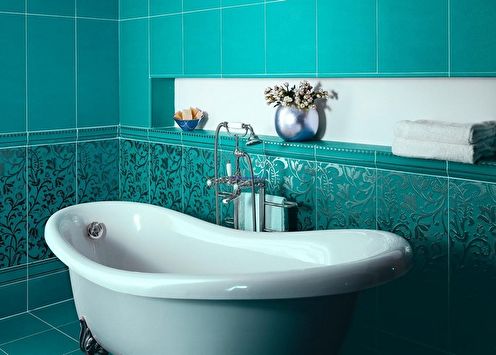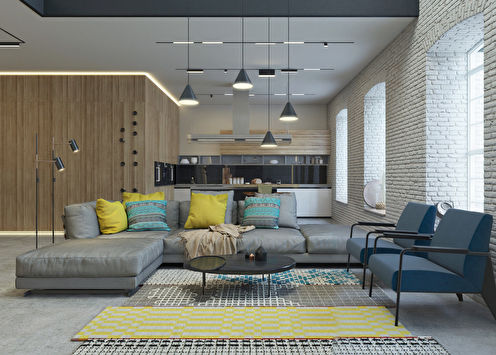
Minimalism is a modern trend in art, architecture, interior, design and fashion. She was born in the XX century. Its essence is to achieve exactly the same maximum functionality with maximum simplicity. Technically, minimalism can hardly even be called an independent style - this is a tendency to simplify and get rid of excessive decorativeness. In the interior, it looks fresh and elegant, and you can equip such a living room in any apartment or house, also at low cost.
Minimalism style features
The first prerequisites for minimalism appeared in the 20s. A great influence on the popularization of the trend was made by the societies of artists who promoted the idea of rational utilitarianism. They argued that the new art should be extremely clear, pure, concrete and energetic.
Over time, this was reflected in the design and architecture. By the 60s, the trend had finally taken root, when the upper and middle classes throughout Europe were completely saturated with flamboyant luxury. For a long time, people compensated for hypertrophied decorations of everyday life memories of difficult times. The same overloaded interiors triumphed in palaces and mansions around the world. It was already impossible to surprise them. In addition, they were tiring and requiring complex care. And finally, the alternative came - minimalism.
Now minimalism is rather a way of life that goes against the culture of consumption. These are traditional eco-friendly materials, simple forms, a minimum of details, the use of each square with benefit and maximum comfort.
In the interior of the living room in the style of minimalism, the following features prevail:
- Multifunctional modern furniture;
- Lack of accessories and senseless decor;
- Simple lamps, without bulky chandeliers, sconces and floor lamps;
- Multilevel diffused lighting;
- Use of partitions and zoning of space;
- Simple shapes, strict lines and clear geometry;
- Discreet colors;
- A lot of natural light and light-transmitting structures;
- Modern compact equipment;
- Lack of piling up things.
Together with hi-tech and loft, minimalism is one of the most relevant and fashionable styles. But for its embodiment it is not enough to throw out all that is superfluous. It requires a professional and thoughtful approach.
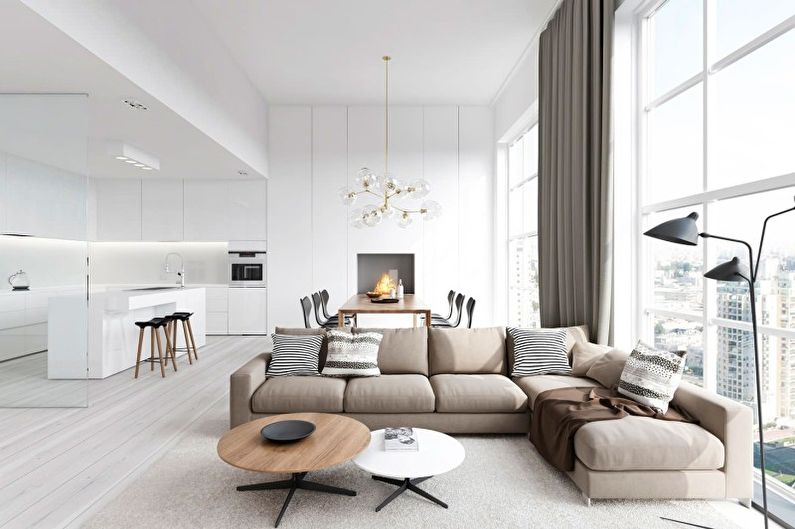

Color schemes
Minimalism gravitates towards natural materials. Raw brick and stone, different types of wood are actively used. Of more modern materials, concrete, decorative plaster and glass are used, less often - plastic. It all depends on the particular branch. Scandinavian or Japanese minimalism does not tolerate artificiality at all.
Minimalism white living room
White is classic for minimalism. Depending on the shade, it can be bluish-snow or go in soft cream tones. It is convenient to focus on the location of the living room. If there is not enough sunlight in the room, it is better to take warm shades. They warm and cheer up. If the room is too sunny and hot, sterile snow-white and grayish tones will do. They will give a feeling of freshness and coolness.
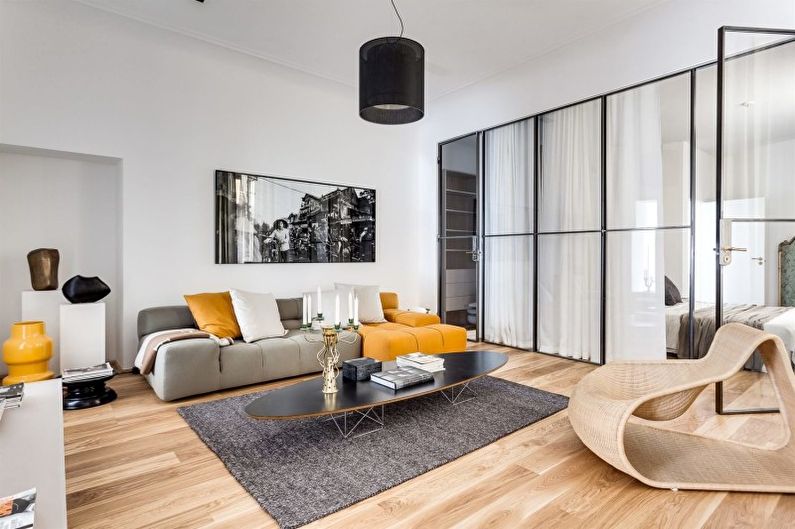
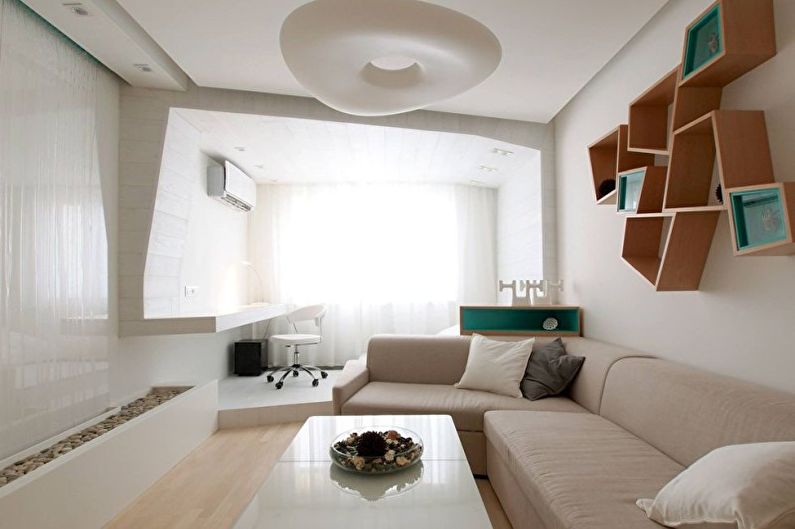
Brown minimalist living room
Of dark colors, excluding gray and black, dark brown is most often used in minimalism. This is the natural color of wood. Wooden furniture, decorative inserts on the walls, parquet or laminate flooring - all this fits perfectly into the living room. And in large spacious and tall rooms, you can even experiment with glossy chocolate ceilings.
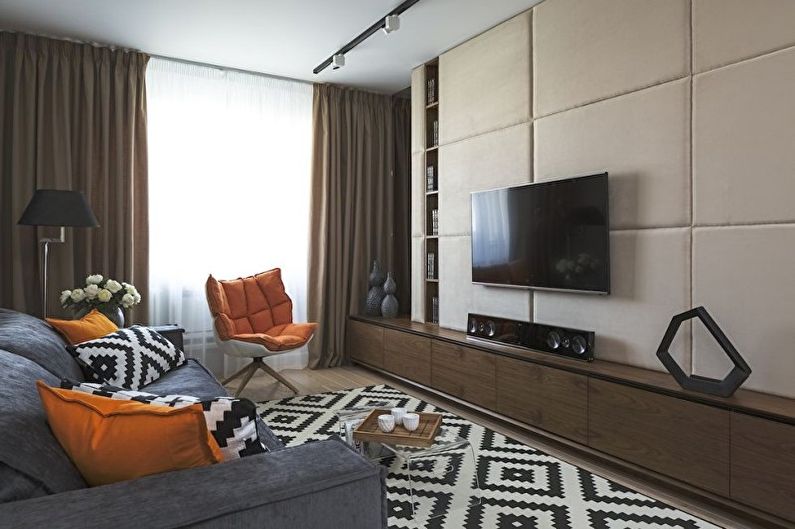
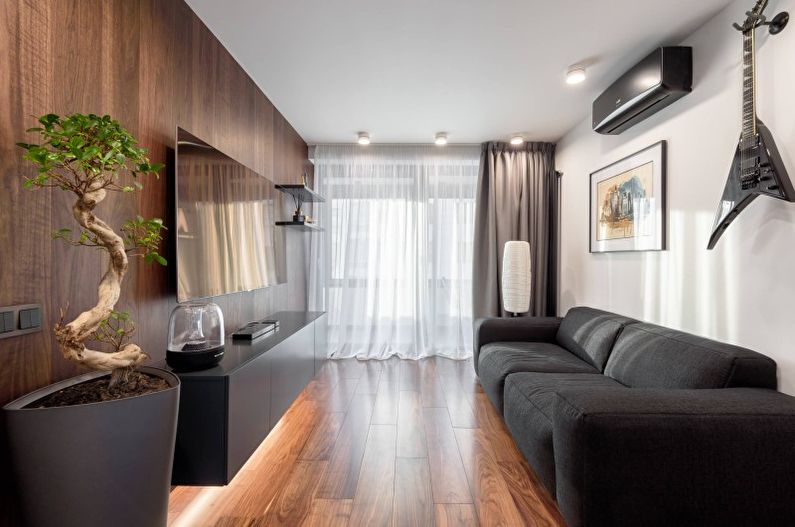
Minimalism green living room
In the wake of eco-trends, green is actively used. Its rich herbal shades are for emphasis, while the restrained soft mint or olive are used as a base. The desire for environmental friendliness and natural textures immediately found reflection in minimalism. Naturally, one cannot ignore the main color of nature. Indoor plants look good as decor in such a living room in rough, simple concrete flowerpots.
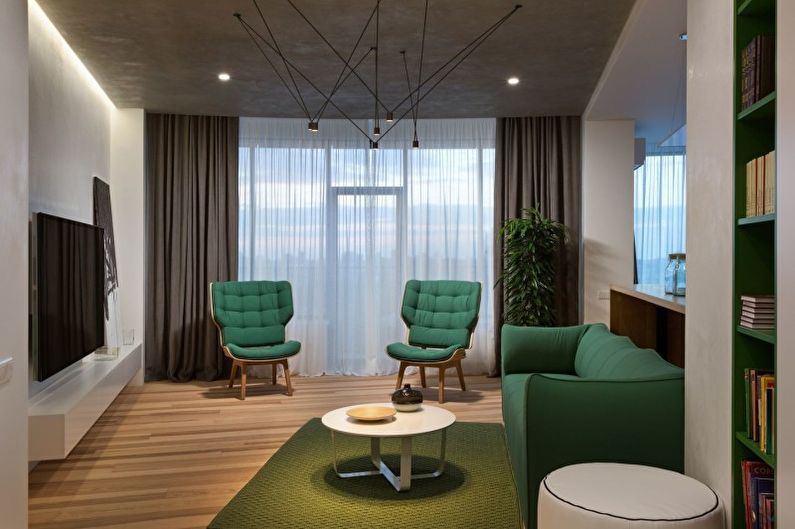
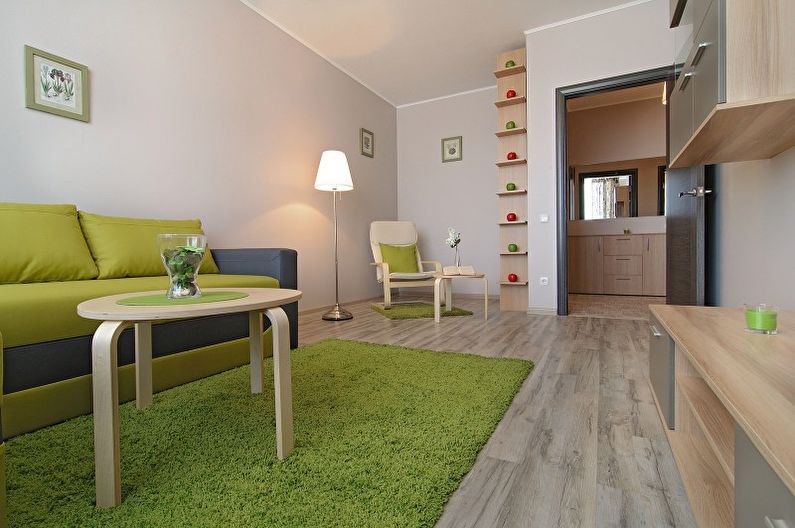
Minimalism yellow living room
Of the bright, sunny colors, the most popular is yellow. Usually these are its muffled options: pastel, shades with leaving in beige, sand and cream. They are warmer than ordinary white, harmonize well with general trends and invigorate. Such a living room will be sunny and comfortable even on the most cloudy and cold day.
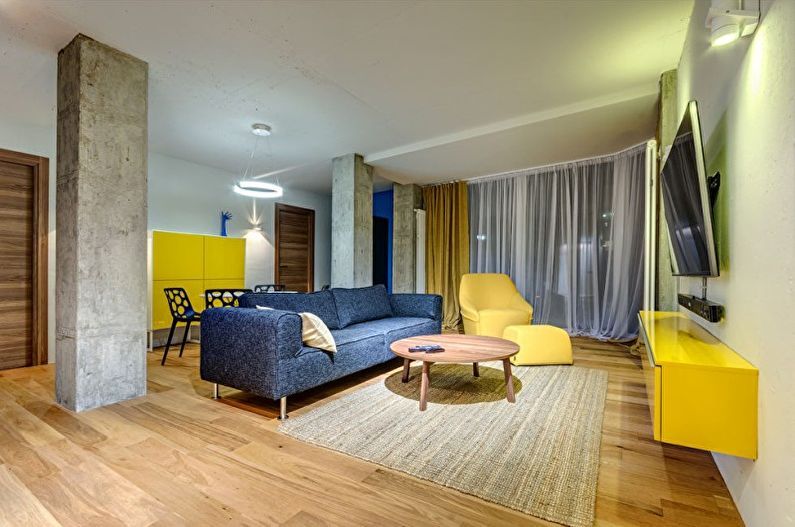
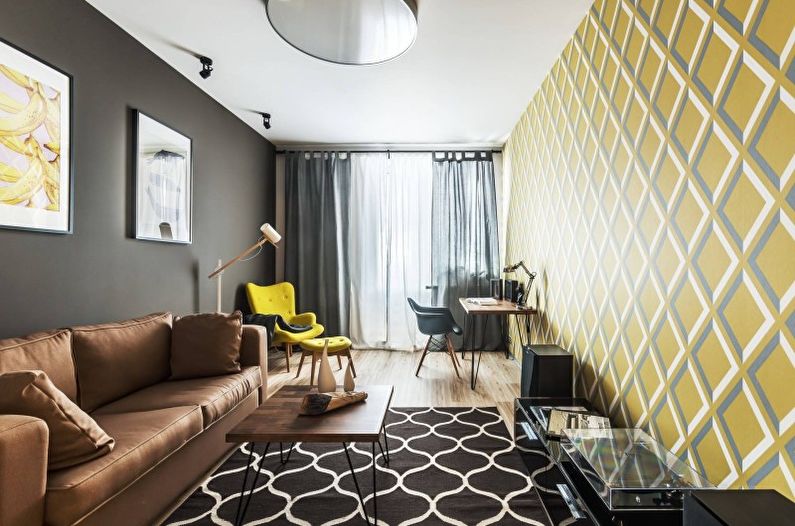
Finishing and materials
Traditionally, minimalism in the interior of the living room is a light color scheme. White and gray lead in it. Black is used to separate the space. Contrast is achieved through a competent combination of midtones. Also in use are natural colors and textures: wood, stone, brick. A large role in shaping trends was played by Japanese traditions. It was from there that the West took simple forms and free space. From there came a pale, neutral color scheme. Such a living room should not create any noise, because the basis of Japanese philosophy is calm and contemplation.
Floor
As a flooring in minimalism, bulk floors, large light tiles, natural polished stone or modern linoleum are especially good. Light geometric patterns are acceptable.
Natural wood or laminate looks even better in the living room. They are elegant, warm and comfortable. The wood texture blends flawlessly into the overall style. Usually these are light or whitened varieties.
Carpets and rugs, especially solid ones, are rare. Sometimes a small rug fits gracefully into the relaxation area by the sofas, but this is not necessary for a minimalist living room.
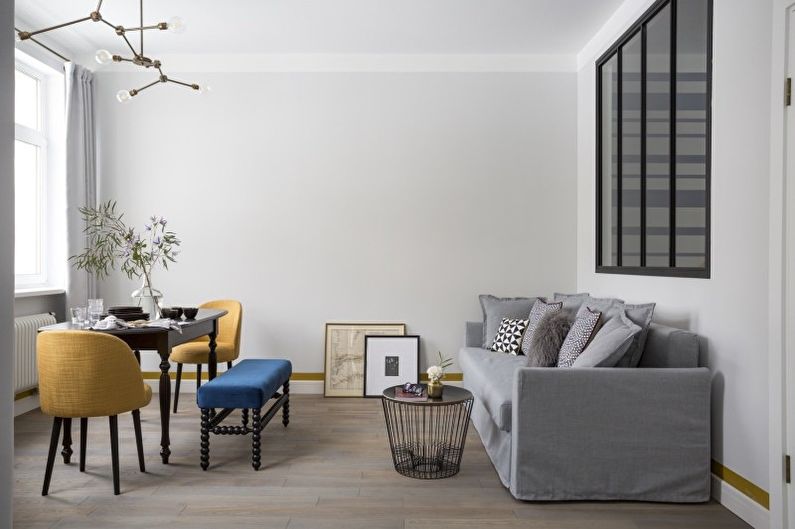
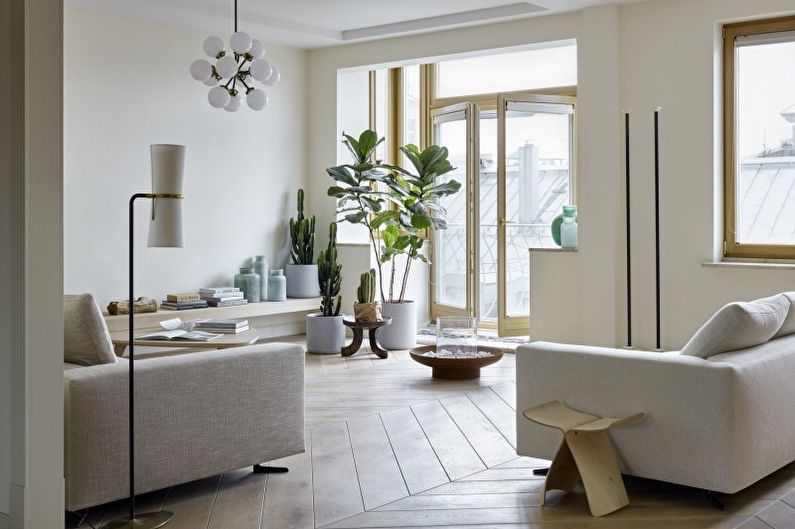
Walls
For the design of walls in the style of minimalism, decorative plaster is successfully used. You can also simply paint a smooth concrete base or brick wall. Deliberate negligence gives the style its own unique charm.
Less commonly used are wallpapers and decorative cladding panels. They should also be light and simple, without complex patterns. Light geometric ornaments are possible, barely noticeable on the main background. Instead of playing with colors and patterns, minimalism allows you to play with texture. For example, a brick or plaster wall can be accented on a generally smooth background, but they will be painted in the same color.
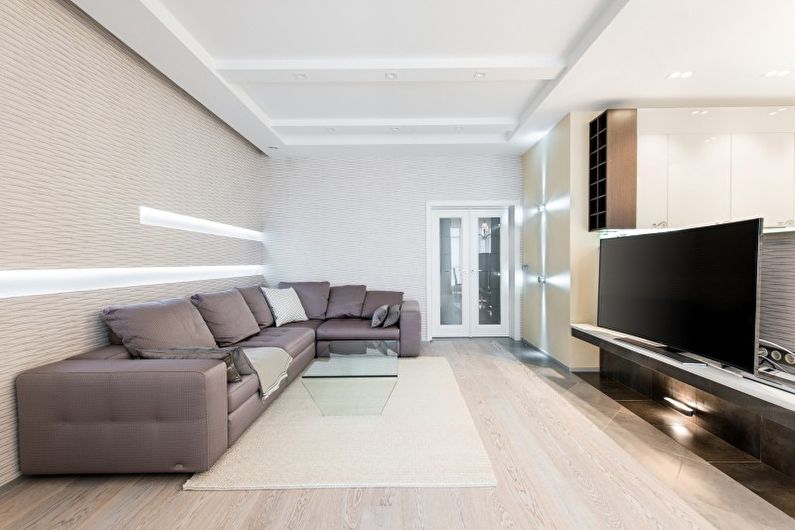
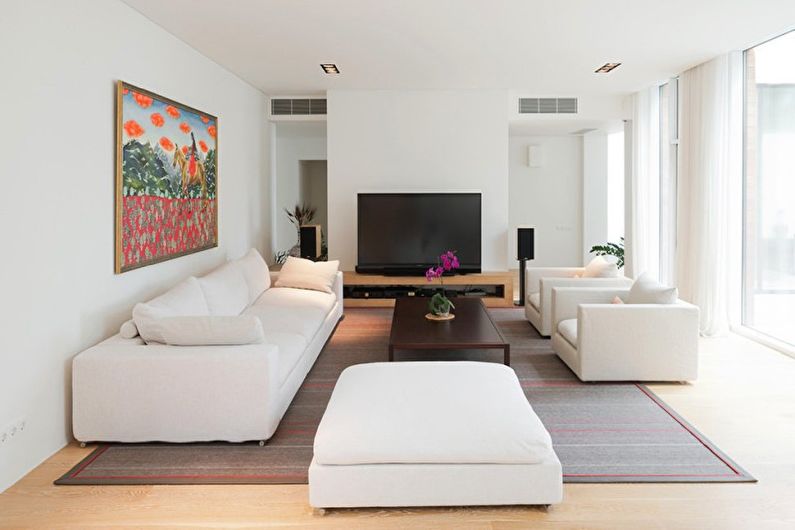
Ceiling
The ceiling in minimalism is a stretch. It can be glossy or matte, depending on the size of the room and the preferences of the owners. Classic colors - white, silver gray, ivory, light cream shades. The choice depends on whether the cold or warm main gamut.
"Chip" of tension structures in their simple appearance and functionality. It is easy to care for such a ceiling, it does not require repair or replacement for a long time, and inside you can hide communications or install lighting. This is the best option for spotlights, which are the basis for zoned multi-level lighting.
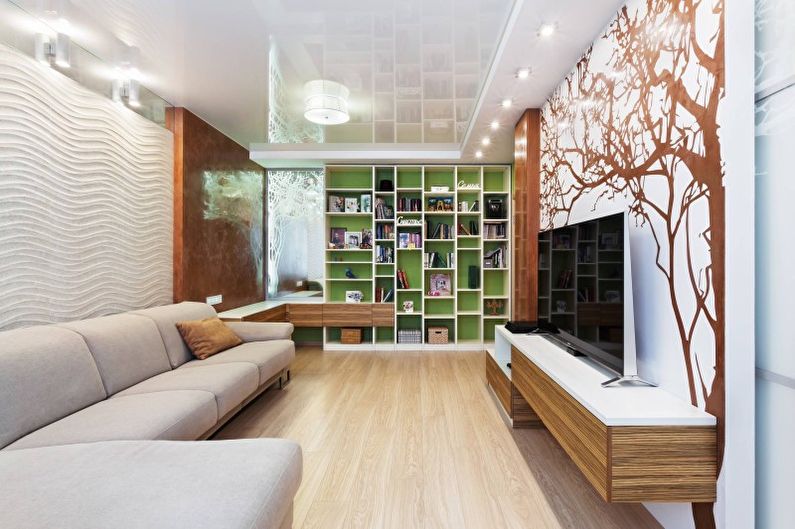

Minimalism living room furniture
Minimalist cabinet furniture includes laconic flat facades, polished and varnished wood, glossy surfaces, glass shelves and doors, metal fittings. Glossy plastic or wood imitation is less commonly used. Tabletops and window sills can be decorated with artificial stone.
Especially carefully you have to choose upholstered furniture. Its forms and textures should be in harmony with the surrounding space. A win-win option - clear rectangular designs. For shapeless and streamlined elements, find another application.
Multilevel structures, built-in drawers and other useful little things are popular. For example, the bases of sofas and armchairs can be turned into full-fledged wardrobes, and a wall-mounted wooden panel or wide, even armrests can easily turn into a table.
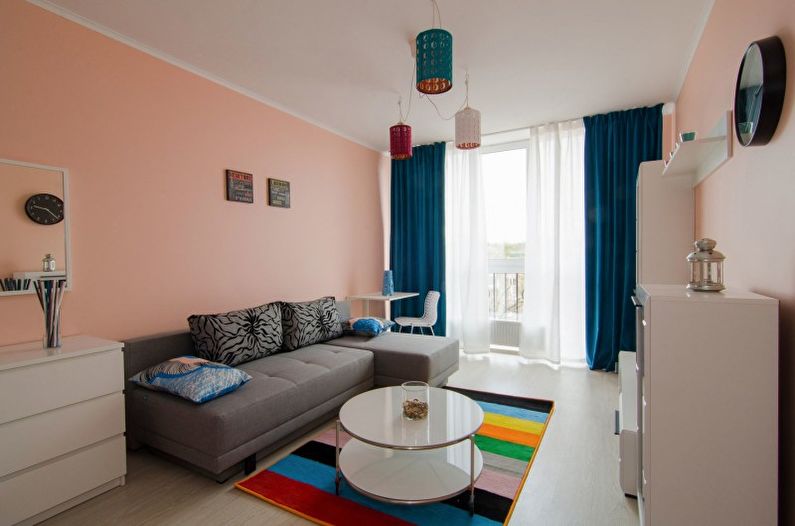

Lighting
Minimalism is necessarily a large amount of daylight. If the north side or there are not enough windows, the living room is decorated in warm white tones and suitable lamps are selected. Curtains are almost never used, so as not to block the light and not clutter up the space. If they are, then these are compact and functional blinds or Roman curtains.
Large and expressive shades are not typical of minimalism, but they are actively using spotlights, neat geometric discs and hidden lights. In the course of the side, ledge, niche lighting, halogen and LED lamps. The backlighting of the furniture below creates the illusion that it soars in the air.
An interesting solution for the living room is a bright neon backlight, which is not visible in normal mode. It allows you to create a sense of celebration and party atmosphere in the room at any time.
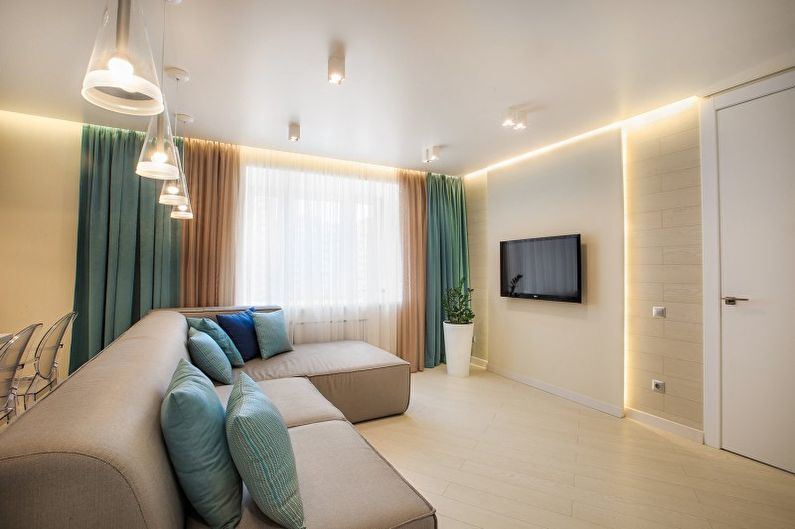
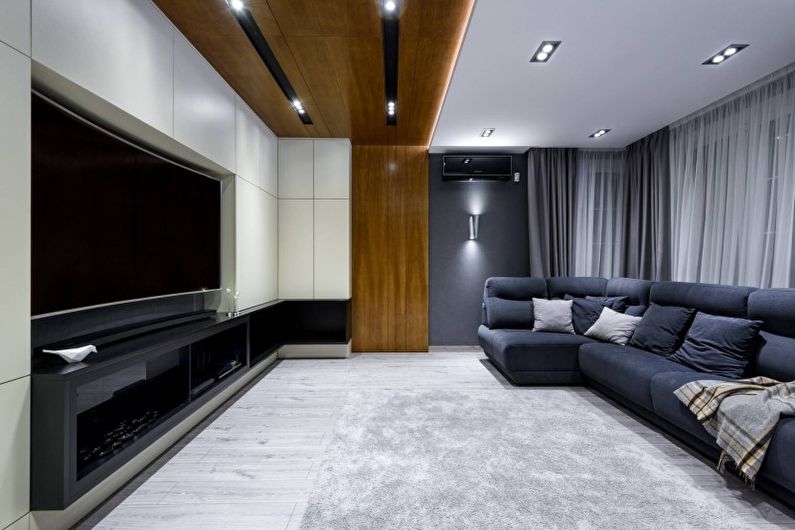
Decor and Textile
The decor is minimal in minimalism. All surfaces are solid and flawless. Small accents are enough to revive the interior, but there are very few of them. For example, a small improvised rock garden or skillful ikebana, reminiscent of the eastern origins of the style, look good.
The same goes for textiles. Upholstery of upholstered furniture is simple and seasoned in the general range. Usually these are simple smooth textures or leather. "Heavy" textiles, like velvet or tapestry, are not characteristic of minimalism. On the sofa you can throw a few bright accent pillows, but no more. Bedspreads, if any, are extremely simple and plain. This style does not tolerate unnecessary dust collectors.
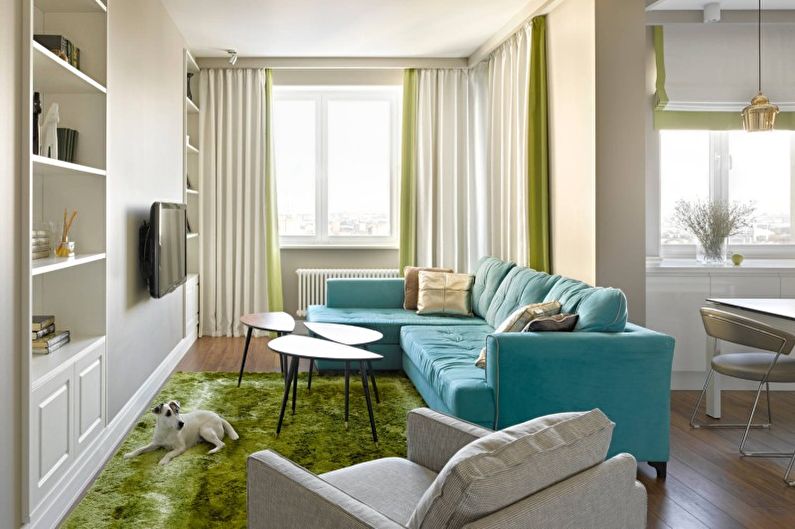
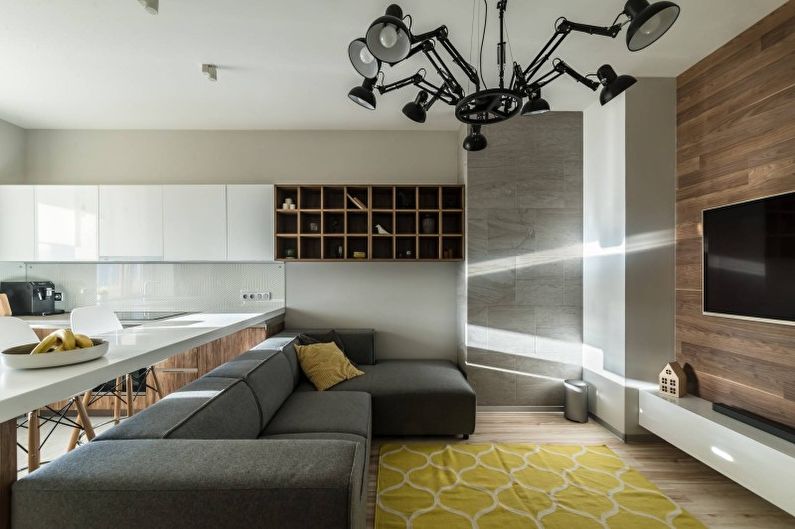
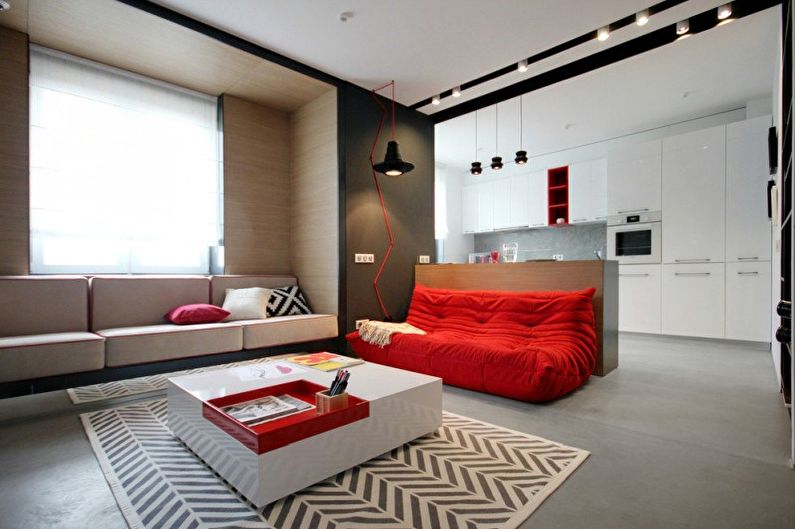
Minimalist small living room
Bright and concise minimalism is perhaps the best option for arranging a small living room. It works entirely to visually enlarge and lighten the space. These are light colors, and an abundance of light, and the absence of excesses.
Minimalism is zoning, niches, partitions and complex structures. All this allows you to effectively use every centimeter. These are folding tables, sleeping places that are completely hidden in a closet, sliding doors, compact furniture and simple decoration in bright colors. In particular, transformer furniture.
A small living room in the style of minimalism seems much larger, more spacious and more comfortable. If it is possible to tear down walls with other rooms, you can completely replace them with light and light-transmitting partitions and combine the living room with a kitchen, balcony or work area.
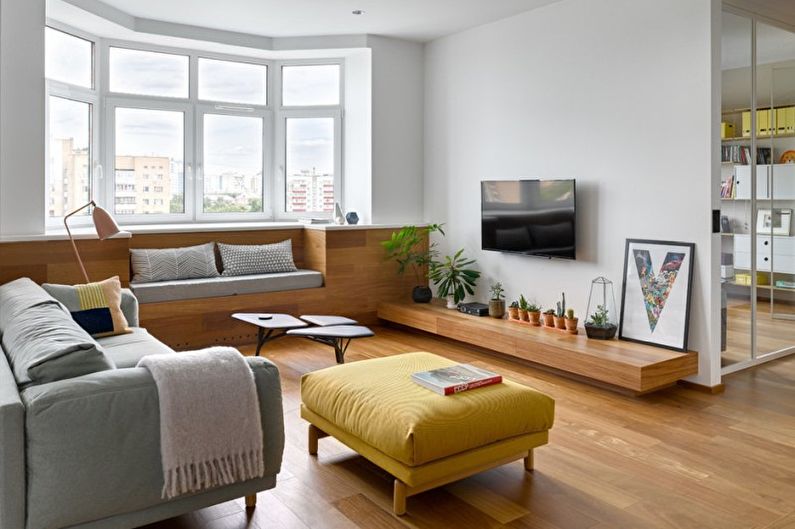
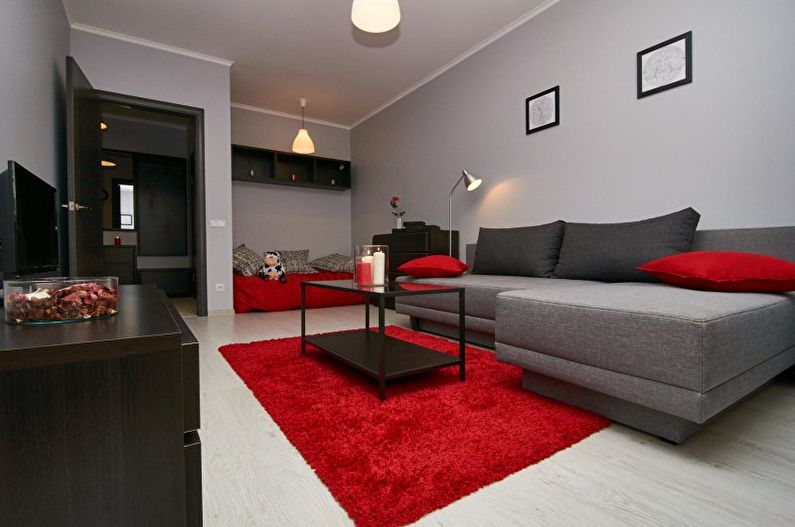
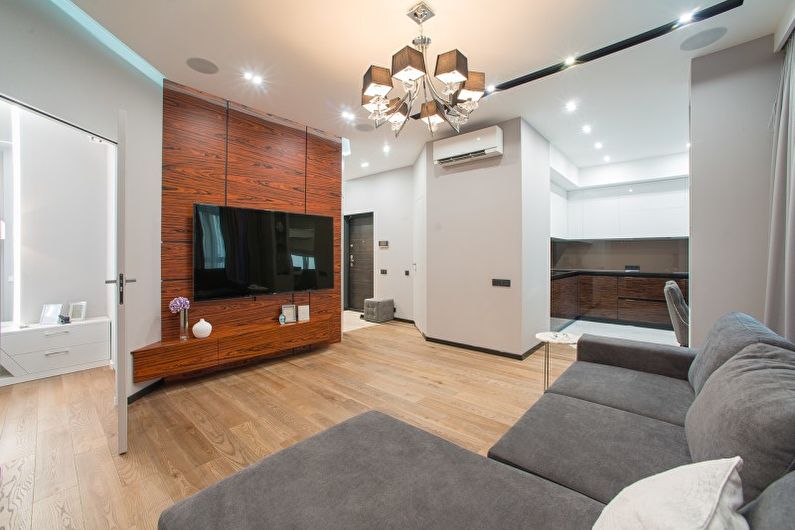
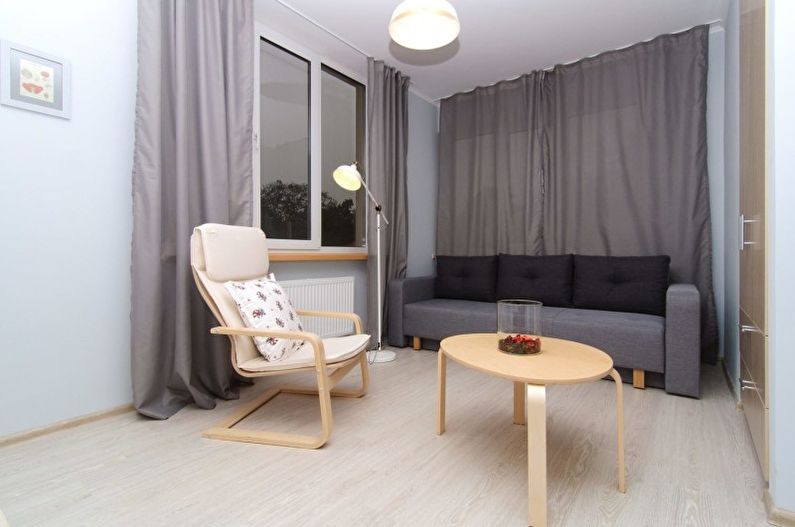
Minimalism style living room design - photo
Want to design a living room in the style of minimalism, but do not know where to start? We offer you a selection of beautiful photos to search for new ideas and inspiration! Enjoy watching!

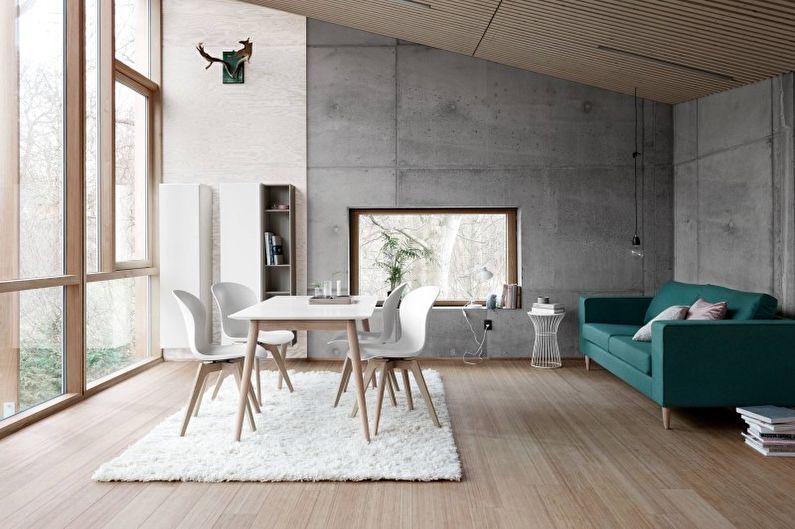
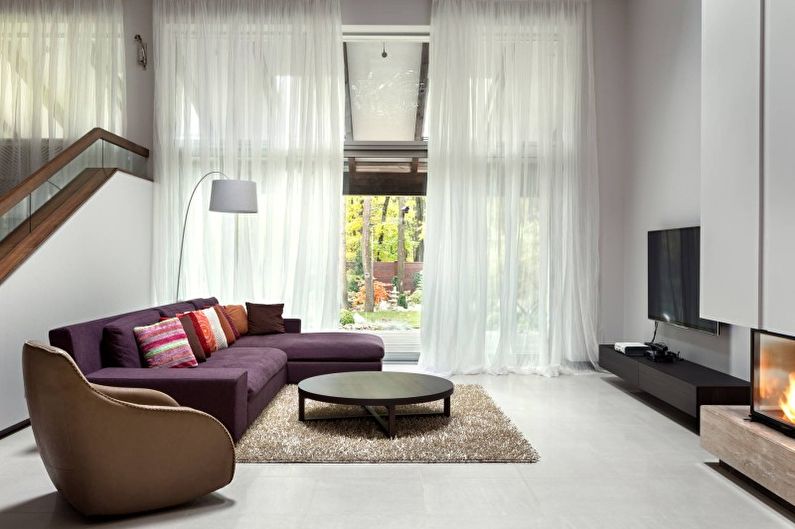
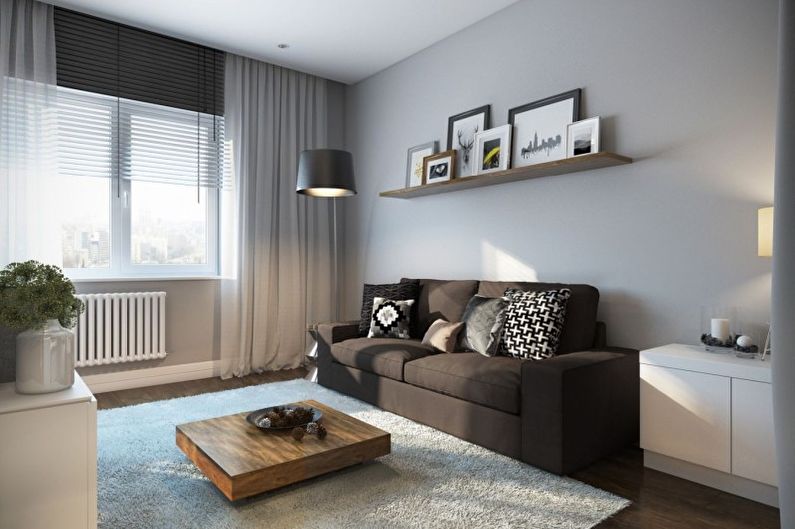
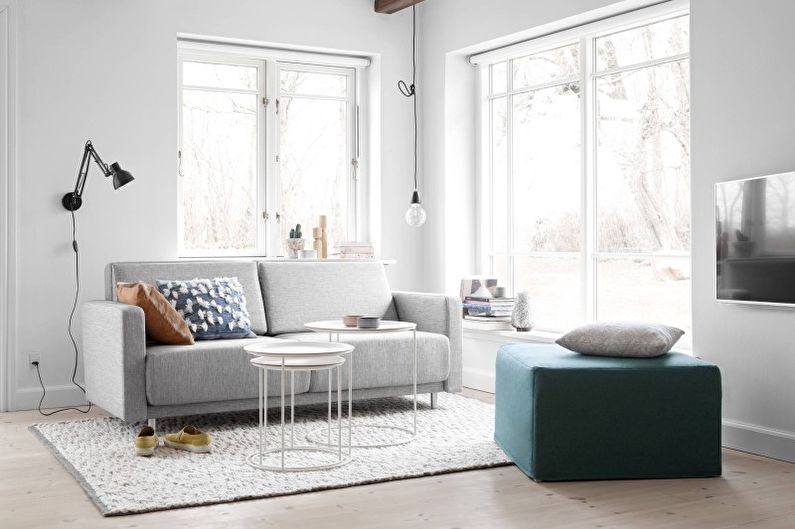
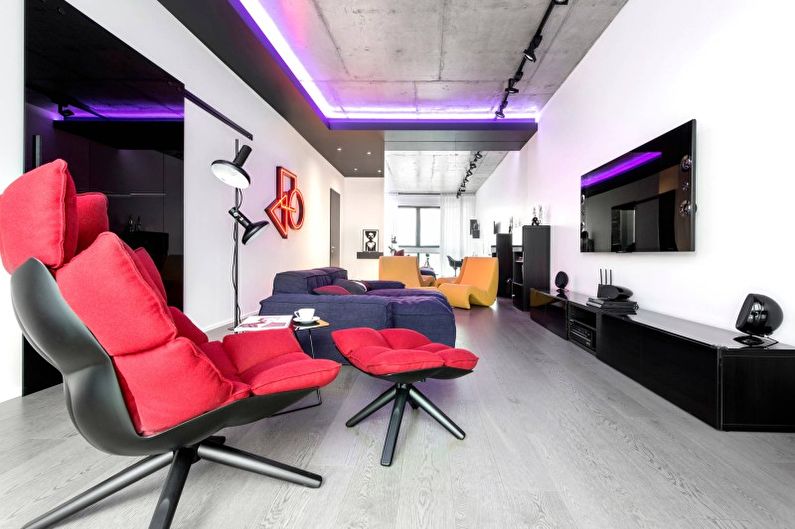
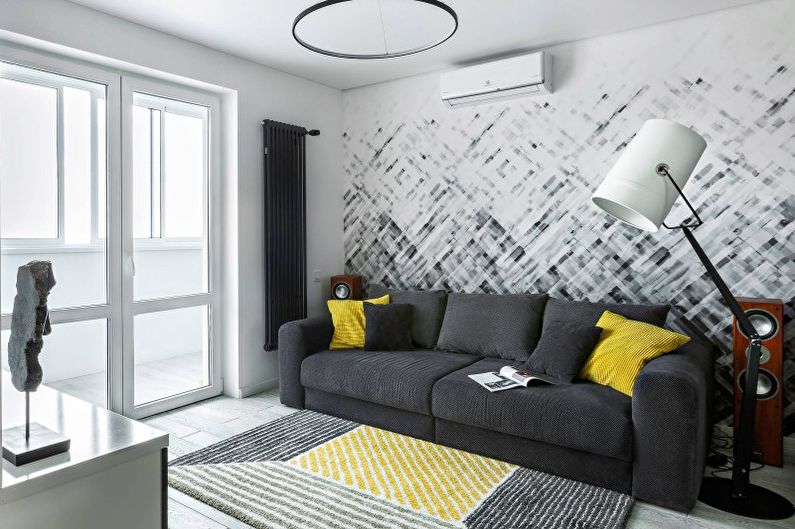
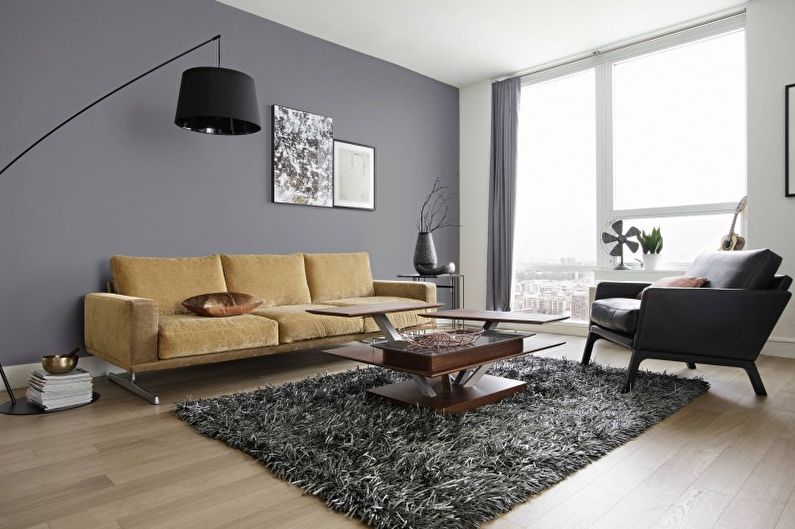
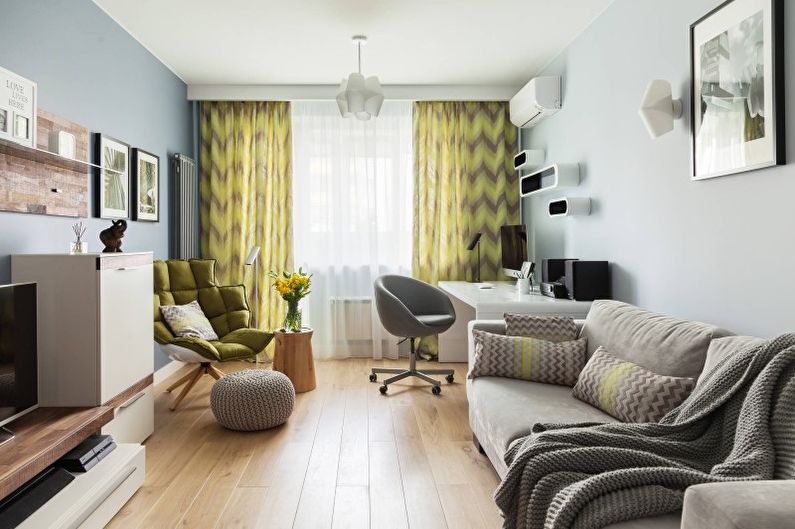

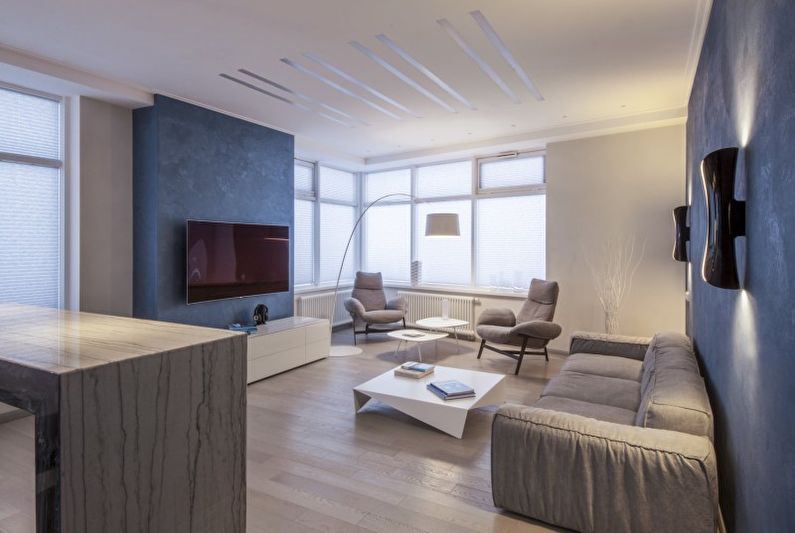
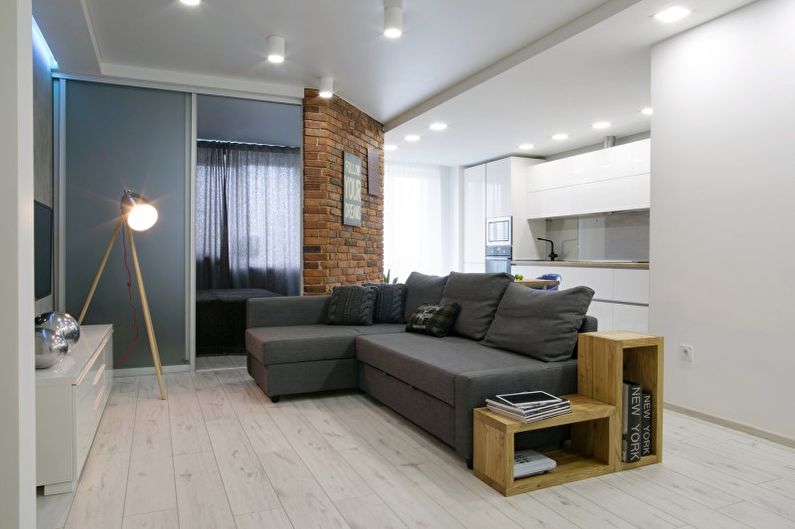
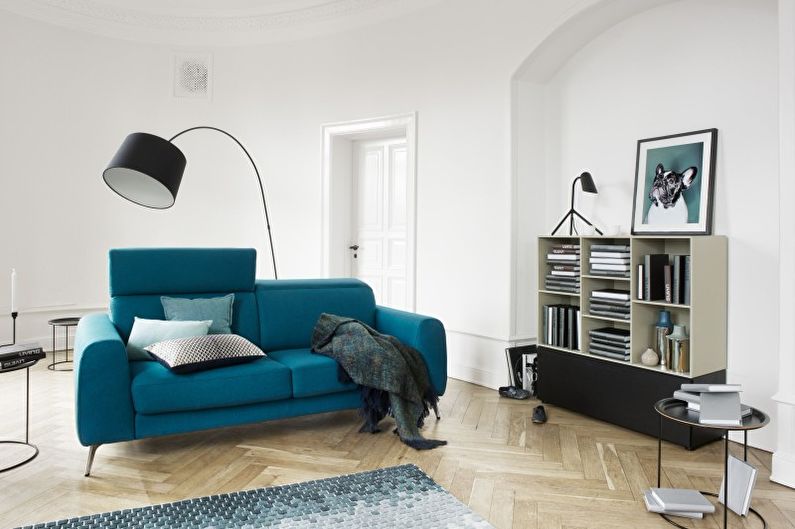
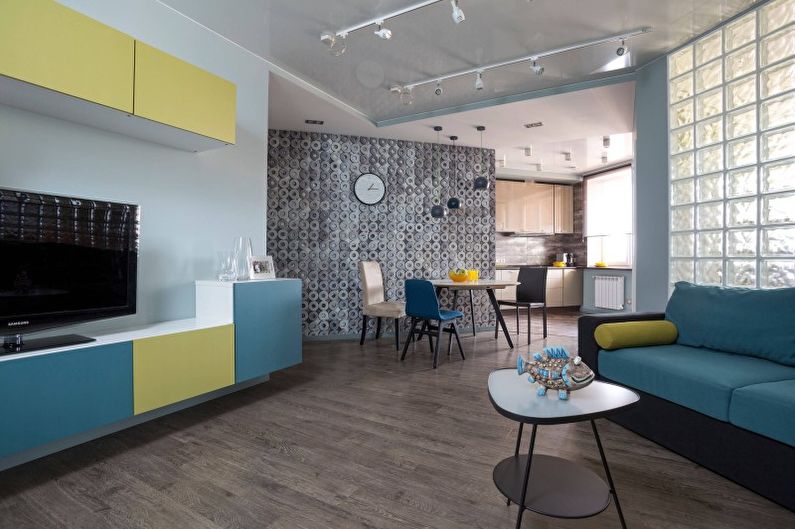
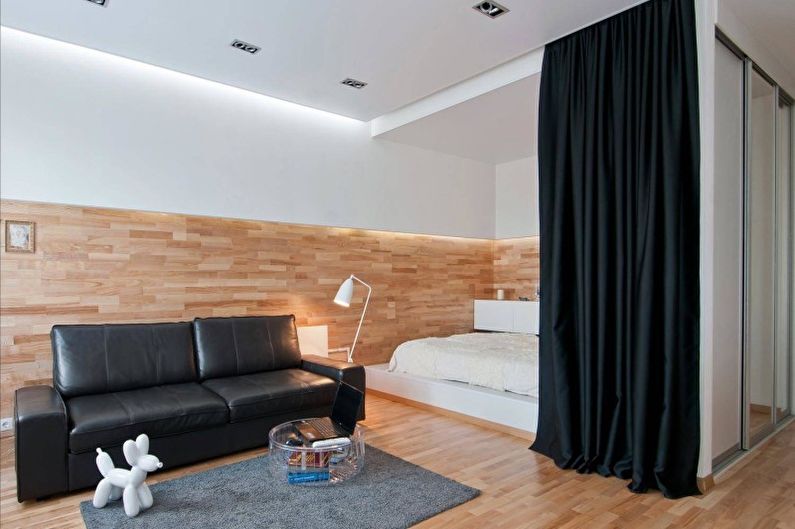
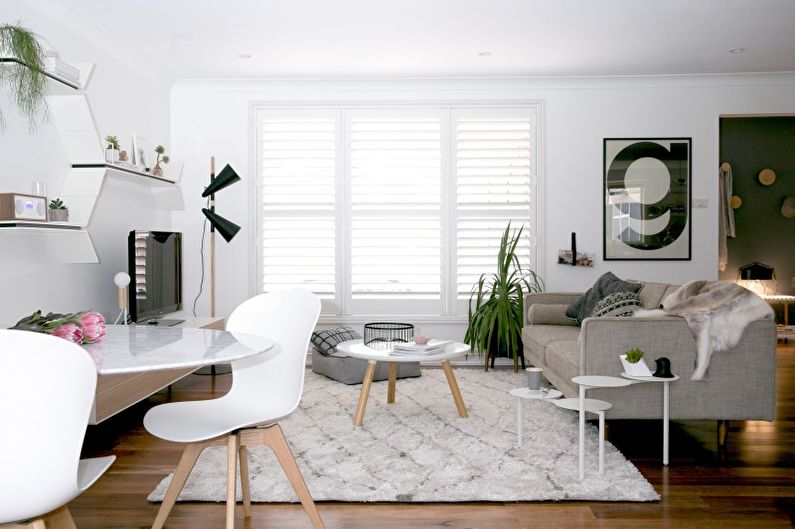
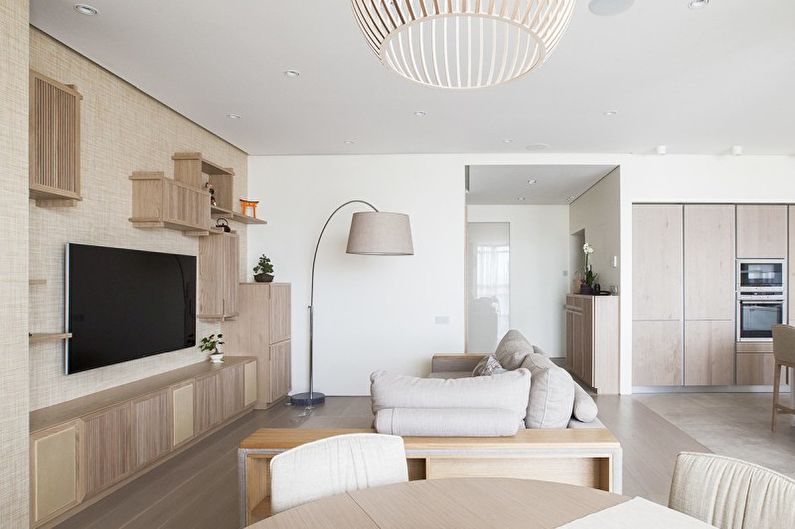
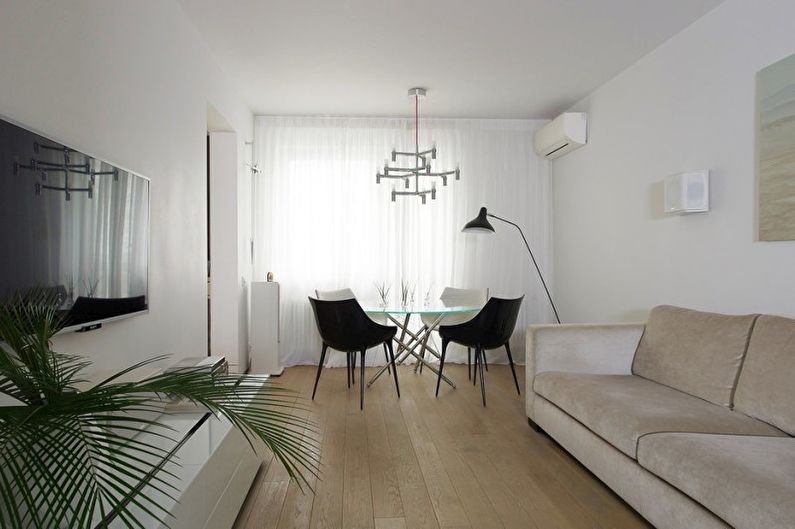
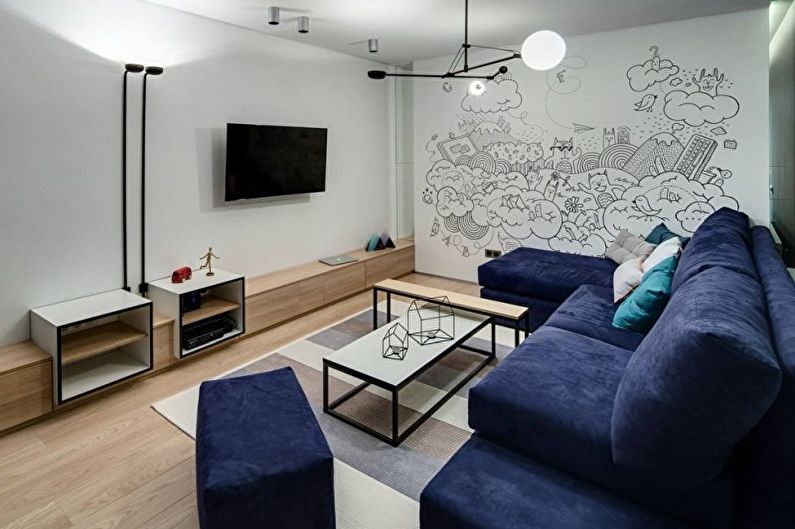
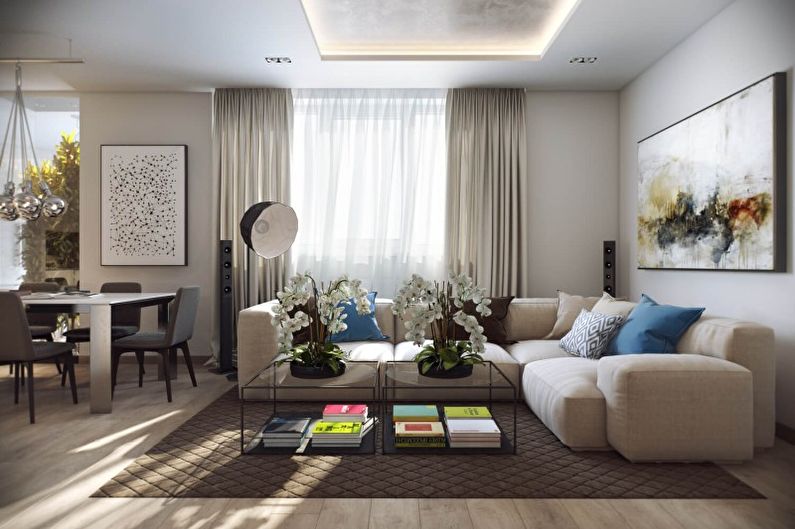
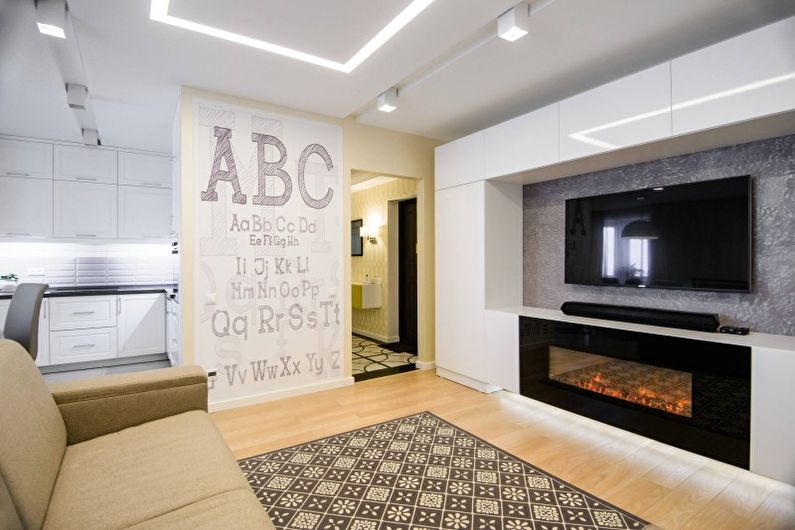
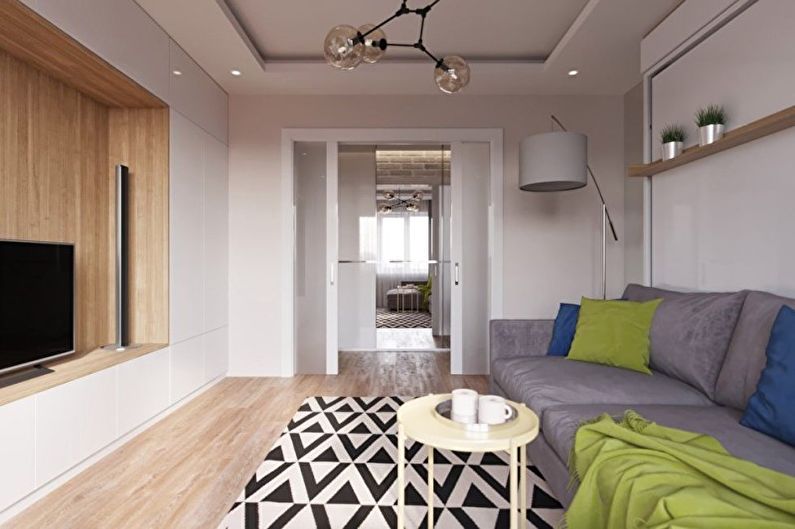
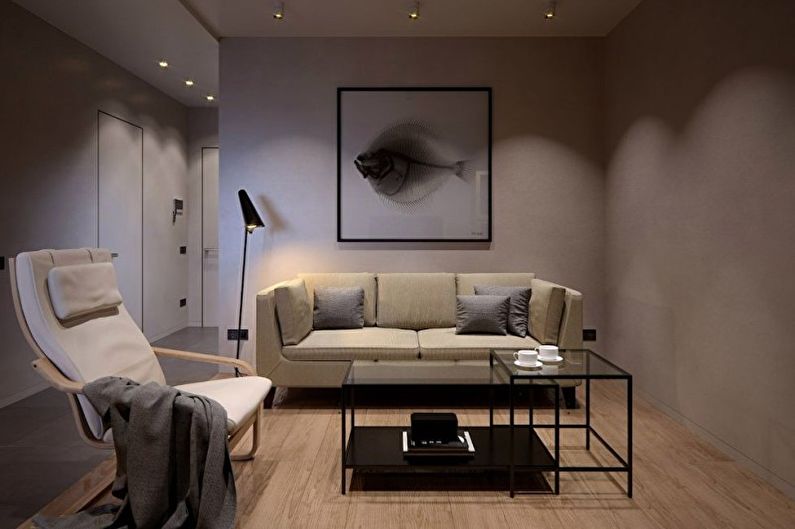
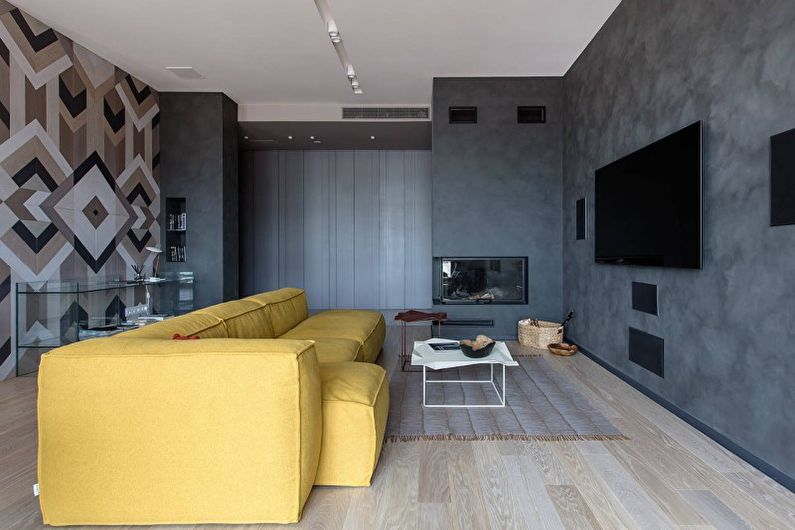
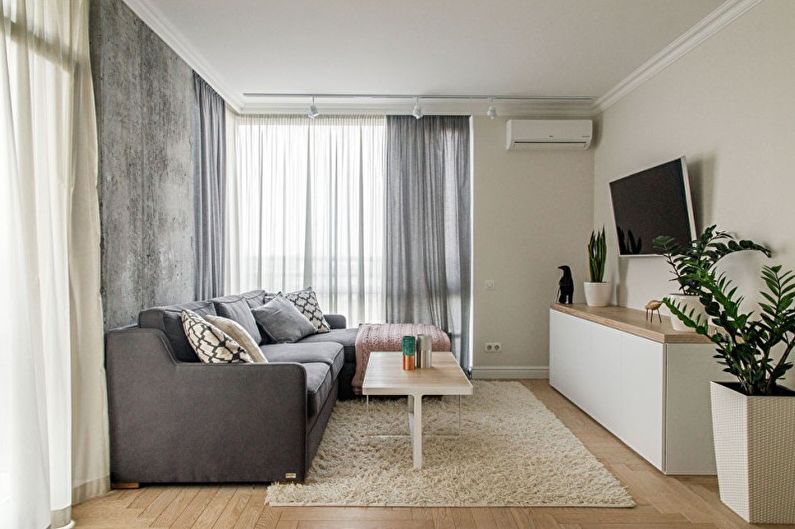
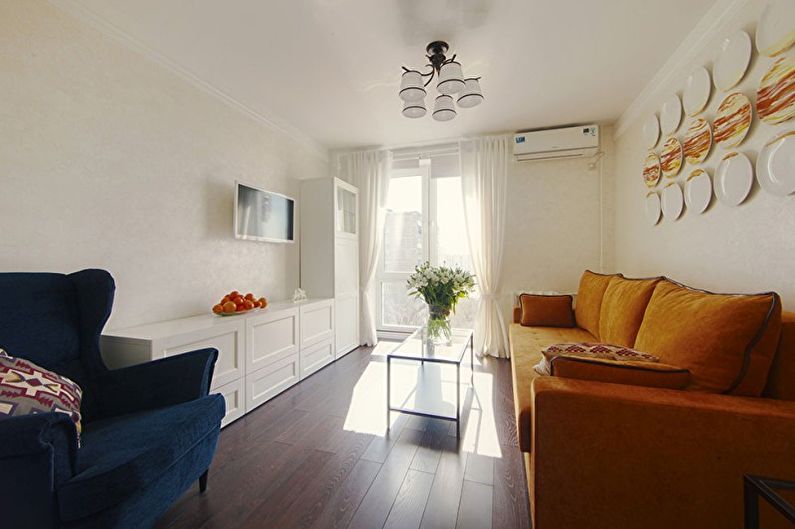
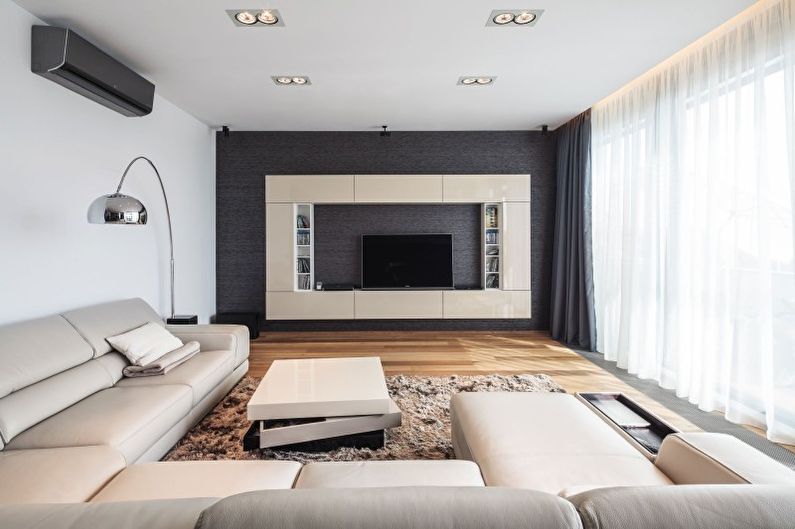
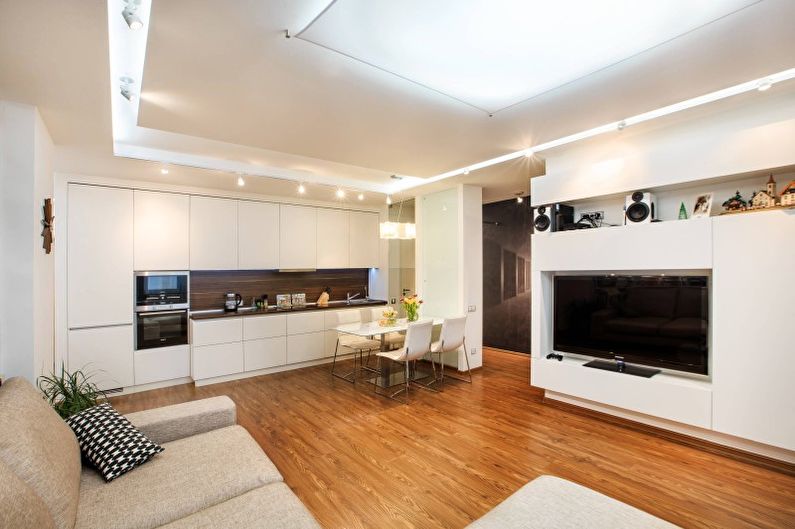
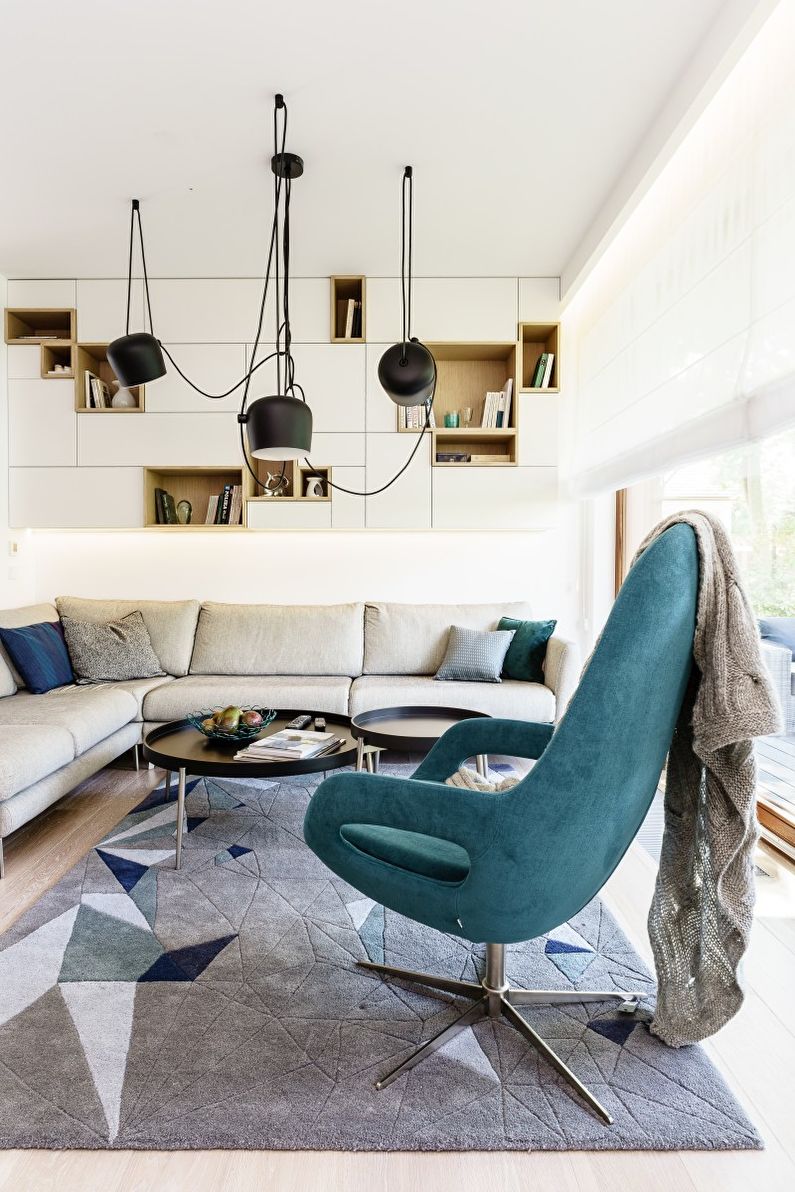
Video: Minimalism Living Room - Interior Ideas
